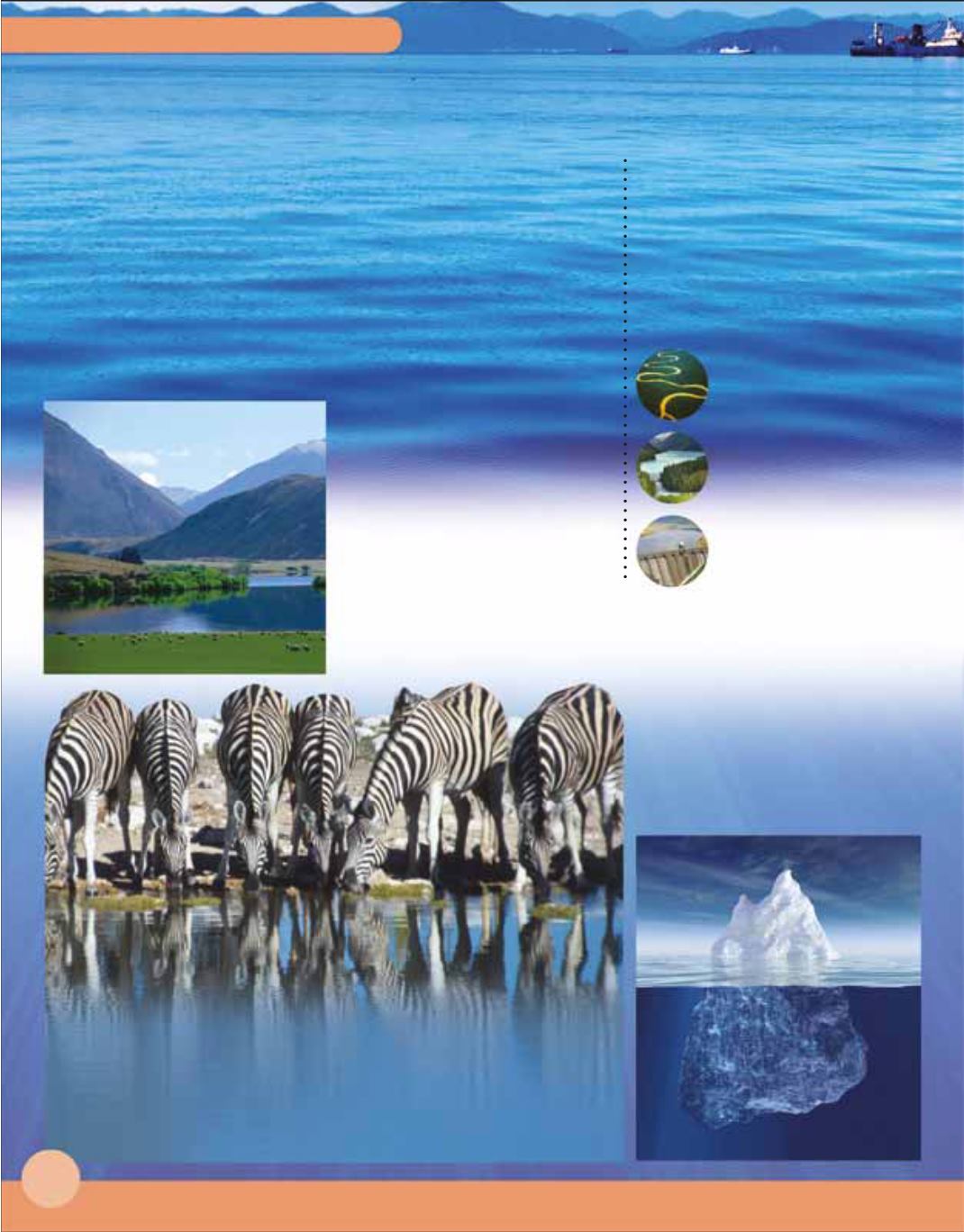
258
Earth is often called the blue planet
because 75 per cent of its surface is
covered in water. Most of the Earth’s
water is salt water in the oceans.
Less than one per cent of all the
water on Earth is fresh.
Fresh and salt water
Water for life
All animals – and most other living things – must have
water to survive. In mammals, including humans, water
is part of the blood and of organs such as the skin and
brain. There is water in every cell in your body!
How much of your body is water?
The hydrosphere
The hydrosphere is the
name for all the water
on Earth. It includes
oceans, rivers, and
lakes. It also includes
water that is frozen,
such as icebergs.
Trapped in ice
Less than 33 per cent of fresh
water is usable by humans.
The rest is frozen in glaciers
or icebergs (below), or as
huge sheets of ice at the
North and South poles.
Lakes
are natural dips
in the Earth where
water collects.
Reservoirs
are man-made
lakes that are built to
store water.
Rivers and streams
flow
from mountains down to
the oceans.
Freshwater sources
People get fresh water
from different sources
on Earth’s surface,
including rivers, streams,
lakes, and reservoirs.
Planet Earth


